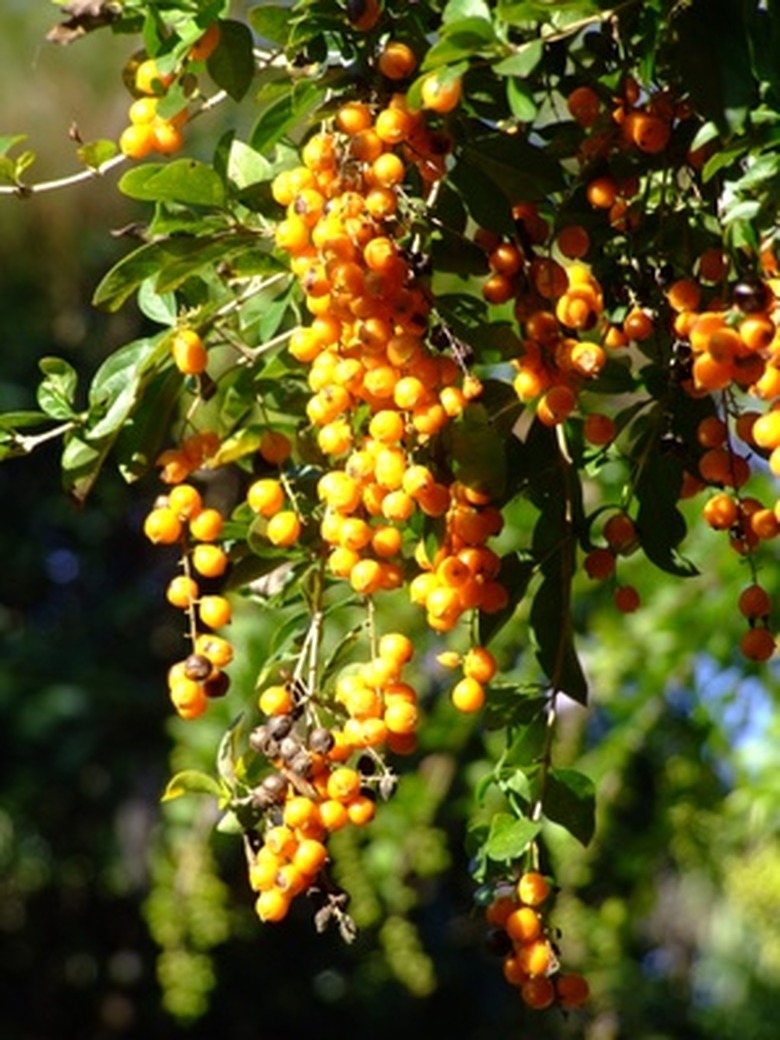How The Color Of Light Affects Plant Growth
Sunlight comes in the form of waves, each of which has a different length, the distance from peak to peak. Waves of varying lengths produce different colors that can be broken into a prism of red, orange, yellow, green, blue, indigo and violet light. Raindrops in sunlight act as tiny prisms, yielding a rainbow of colors. Different colors of light affect plant growth in diverse ways.
Spring Light
Light of the lengthening days of spring is dominated by the blue part of the light spectrum. Seedlings need blue light for the growth of stems, stalks and leaves. Thus spring is the growing season for plants.
- Sunlight comes in the form of waves, each of which has a different length, the distance from peak to peak.
- Raindrops in sunlight act as tiny prisms, yielding a rainbow of colors.
Summer Light
Summer is the time plants blossom and grow fruit. The red part of the light spectrum slowly dominates the light of early summer. Red light encourages plants to flower, the first step of sexual reproduction and the growth of fruits. As the summer progresses, the amount of red light in the sun's natural spectrum increases. The red light plus shorter days and cooler nights toward the end of summer signal to plant hormones that it is time for fruit to ripen and later, for leaves to change color and fall.
Fall and Winter Light
In the fall and winter, when many plants are dormant and cease growing, the spectrum of light from the sun is dominated by cool red and purple colors.
Artificial Light
Cool white fluorescent bulbs yield lots of blue and green light, but not much red light; they encourage leafy growth in plants. Warm white fluorescent bulbs emit lots of orange and red light, but less blue and green light. Full spectrum fluorescent lights give a wide range of light needed by plants.
- Summer is the time plants blossom and grow fruit.
- The red light plus shorter days and cooler nights toward the end of summer signal to plant hormones that it is time for fruit to ripen and later, for leaves to change color and fall.
There are three types of high-intensity discharge (HID) lamps. Metal halide lamps, often used by professional indoor growers, yield an intense bluish-white light useful for vigorous growth and green foliage. Mercury vapor lamps also give off intense bluish-white light. High pressure sodium bulbs give off a orange-yellow color that promotes flowering and fruiting; plants think it is late summer or early fall. These bulbs are often used by greenhouses to encourage fruiting.
Intensity and Duration
The color, or quality of light, is just part of the way that light affects plants. To understand a plant's need for light, the color needs to be combined with the intensity and duration of the light. Desert plants require more intense light than do tropical plants. Some plants like full sun; others do better in the shade. The duration is how many hours of light a plant gets each day. Some plants need only a few hours; others need 12 to 14 hours of light a day.
- There are three types of high-intensity discharge (HID) lamps.
- Metal halide lamps, often used by professional indoor growers, yield an intense bluish-white light useful for vigorous growth and green foliage.
Unused Light
Plants absorb the light they need for photosynthesis, which is how they produce nutrients. They do not use green light for photosynthesis, so it is reflected away from the plants. That is why most plants appear to be green to the human eye. A few plants do not use purple light, so they have purple foliage.
